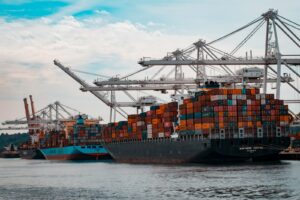Particles released from vehicle tyres could be a ‘significant’ source of microplastics in the world’s oceans, a ground-breaking study has suggested.
The study is one of the first worldwide to identify tyre particles as a major and additional source of microplastics. Scientists have previously discovered microplastics, originating from microbeads in cosmetics and the degradation of larger items such as carrier bags and plastic bottles, in marine environments globally – from the deep seas to the Arctic.
The study shows the tyre particles can be transported directly to the ocean through the atmosphere, or carried by rainwater into rivers and sewers, where they can pass through the water treatment process. Researchers estimate this could place around 100million m² of the UK’s river network – and more than 50million m² of estuarine and coastal waters – at risk of contamination by tyre particles.
Its findings also highlight some of the optimal places for intervention, for example, that fitting filters to washing machines could be less effective than changing fabric designs to reduce fibre loss, with another study at the University having recently shown that normal wear and tear when wearing clothes is just as significant a source of microplastic pollution as release from laundering.
Professor Richard Thompson OBE said: ‘Scientists have long suspected that tyre debris is posing a hidden threat to the marine environment. However, there have been few studies measuring abundance in aquatic environments. Now we have a clearer indication on quantities we need to gain a better understanding on transport in the environment and the potential impacts on marine life.
‘This study gives us a real insight into the importance of tyre wear as a source of microplastics. However there are still many unknowns, and compared to other forms of microplastics we know relatively little about tyre wear particles. So it is important to continue to take steps to reduce emissions of better understood sources like fibres from textiles and the fragmentation of larger items.’
















